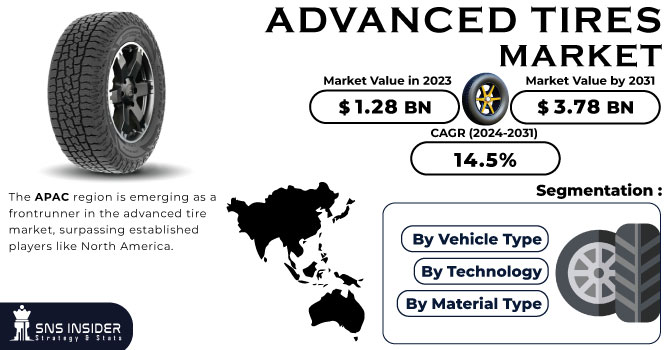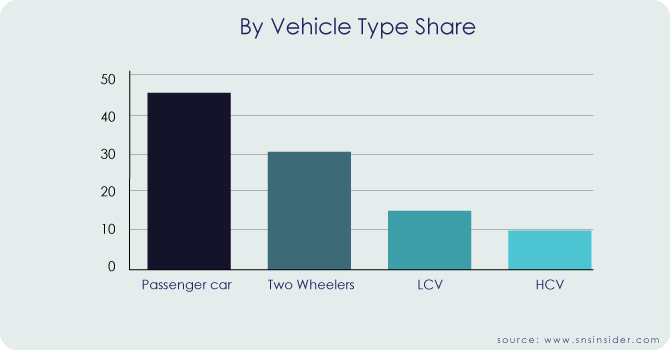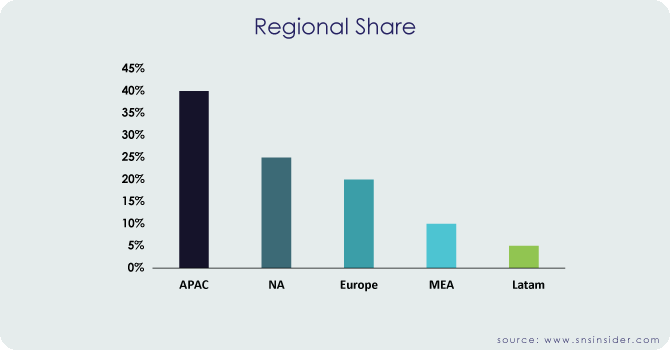Advanced Tires Market Report Scope & Overview:
The Advanced Tires Market Size was valued at USD 1.28 billion in 2023 and is expected to reach USD 3.78 billion by 2031 and grow at a CAGR of 14.5% over the forecast period 2024-2031.
Advanced tires are constructed using a wide variety of material combinations drawn from a wide range of categories. In most cases, technologically advanced tires are airless and cannot be punctured in any way. Because it has a smaller surface contact area in comparison to conventional tires, it results in an improvement in the overall fuel efficiency of the vehicle. The traction that advanced tires provide a vehicle does not diminish even when the vehicle is moving at a faster pace, and they pose less risk on roads that are wet. In addition, the new technology known as the "advanced tire" was able to improve the functionality and overall performance of tires by sensing the conditions of the roads.

Get more information on Advanced Tires Market - Request Sample Report
Rubber from several sources is used to create an innovative tire. As a result of their lack of air pressure, advanced tires do not puncture and so minimize the cost of vehicle maintenance. Even at faster speeds, modern tires’ improved traction keeps the wheels firmly planted on the road. In addition, sophisticated tire technology improves tire performance and functionality by sensing road conditions.
As the automotive industry undergoes a transformative shift towards electric and autonomous vehicles, there is a growing realization that traditional tire technologies may no longer suffice. Consumers and manufacturers alike are increasingly prioritizing advanced tire solutions that offer superior performance, extended lifespan, and enhanced fuel efficiency. Moreover, the rising concern for environmental sustainability has propelled the demand for eco-friendly tire options, prompting companies to invest in research and development to create cutting-edge, green alternatives.
CEAT Tires entered into a partnership with TyresnMore in 2021 for the purpose of providing online sales as well as home tire fitting and servicing. On the TyresnMore website, customers will have the ability to purchase authentic CEAT products such as tires and batteries. The consumer won't have to lift a finger because the company's service crew will bring the product to their house and install it for them.
MARKET DYNAMICS:
KEY DRIVERS:
-
Costs of upkeep and replacement are somewhat high for conventional OTRs.
-
Demand for innovative tires is expected to rise as consumers prefer premium cars and linked technologies.
-
Governments are imposing stricter emission laws for cars, forcing automakers to improve vehicle performance and fuel efficiency.
Governments worldwide are enforcing more stringent emission regulations on automobiles, compelling manufacturers to enhance vehicle performance and fuel efficiency. This push aims to mitigate environmental impact by reducing carbon emissions and promoting sustainability. Automakers are consequently investing in innovative technologies and design modifications to meet these evolving standards, fostering a shift towards cleaner and more efficient transportation solutions.
RESTRAINTS:
-
Fluctuating raw material prices due to low natural rubber supply and oil prices restrain the market growth.
-
Cost of advanced tires due to the need for sensors and computers to run them.
OPPORTUNITIES:
-
The continued introduction of innovative new products by major corporations.
-
Autonomous and semi-autonomous vehicles will boost the market.
-
Tire makers are using 3D printing and repurposed tires to lower carbon footprints.
Tire makers are adopting 3D printing technology to produce more sustainable and efficient tires, reducing the carbon footprint associated with traditional manufacturing processes. Additionally, they are repurposing old tires, minimizing waste and environmental impact. By embracing these innovative practices, the industry aims to contribute to a greener and more eco-friendly approach to tire production, aligning with global efforts to address climate change.
CHALLENGES:
-
Advanced Tires' low commercialization and production capacity.
-
The most difficult obstacle to overcome is the practical use of innovative tire technology.
Impact of Economic Slowdown:
The Advanced Tires Market finds itself at a crossroads as the global economy experiences a slowdown. The economic downturn has introduced a series of challenges, influencing consumer spending habits and overall market dynamics. As businesses and individuals tighten their belts, the demand for high-tech and premium tires has taken a hit. The automotive industry, a key driver for advanced tire technologies, is grappling with reduced production and sales, further affecting the market. However, amidst the economic gloom, there is a silver lining. The focus on sustainability and environmental consciousness remains strong, driving the demand for innovative and eco-friendly tire solutions. As the industry navigates through these economic headwinds, it must adapt to changing preferences and prioritize advancements that align with both economic realities and environmental concerns.
On the other hand, the market faces challenges such as the fluctuating prices of raw materials required for tire production, which could potentially hinder market growth. The cost of synthetic and natural rubber, key components in tire manufacturing, are significantly influenced by crude oil prices. With the economic slowdown, there may be instability in raw material supply chains, leading to price volatility which could impact the production costs and, ultimately, the market growth of advanced tires.
Impact of Russia Ukraine War:
The Advanced Tires Market finds itself at a crossroads as the global economy experiences a slowdown. The economic downturn has introduced a series of challenges, influencing consumer spending habits and overall market dynamics. As businesses and individuals tighten their belts, the demand for high-tech and premium tires has taken a hit. The automotive industry, a key driver for advanced tire technologies, is grappling with reduced production and sales, further affecting the market. However, amidst the economic gloom, there is a silver lining. The focus on sustainability and environmental consciousness remains strong, driving the demand for innovative and eco-friendly tire solutions. As the industry navigates through these economic headwinds, it must adapt to changing preferences and prioritize advancements that align with both economic realities and environmental concerns.
Market, By Material Type:
The global market has been divided into Natural Rubber, Synthetic Rubber, Steel, Elastomers, and other materials Based on the material type segment. It is anticipated that the natural rubber market would experience significant expansion in the years to come. In the next years, it is anticipated that prices would rise for synthetic rubber as well as other crude derivatives that are utilized in the manufacturing of tires.
Market, By Technology:
The global market has been divided into Chip Embedded Tires, Self-Inflating Tires, Multi-Chamber Tires, All-in-One Tires, and Others Based on the technology segment. It is anticipated that the Self-Inflating Tires market would experience significant expansion in the years to come. This is because there has been a growth in the manufacturing of commercial vehicles, as well as a preference for higher tire performance in commercial vehicles, as well as an increase in the number of technologies for fleet management.
Market, By Vehicle Type:
In the dynamic landscape of the Advanced Tires Market, the demand for innovative solutions in the passenger vehicles segment is experiencing a significant upswing. As urbanization accelerates and environmental concerns heighten, consumers are increasingly seeking tires that not only deliver superior performance but also contribute to sustainability efforts. The current demand is characterized by a growing appetite for smart tire technologies, emphasizing features like real-time monitoring, connectivity, and enhanced safety features. Moreover, there is a noticeable shift towards eco-friendly materials and energy-efficient designs, aligning with the global push for greener transportation

Get Customized Report as per your Business Requirement - Request For Customized Report
MARKET SEGMENTATION:
By Material Type:
-
Natural Rubber
-
Synthetic Rubber
-
Steel
-
Elastomers
-
Other materials
By Technology:
-
Chip Embedded Tires
-
Self-Inflating Tires
-
Multi-Chamber Tires
-
All in One Tires
-
Others
By Vehicle Type:
-
Passenger cars
-
LCV
-
HCV
-
Two-wheelers
REGIONAL ANALYSIS:
The APAC region is emerging as a frontrunner in the advanced tire market, surpassing established players like North America. This dominance can be attributed to several factors. Firstly, the region's expanding population and rapid economic growth are driving up vehicle ownership, particularly in countries like China and India. This surge in demand creates a fertile ground for advanced tire adoption, as consumers increasingly prioritize features like fuel efficiency, safety, and comfort. Secondly, governments in the region are implementing stricter regulations on fuel efficiency and emissions, incentivizing the development and adoption of advanced tire technologies. Finally, the presence of a robust domestic manufacturing base in countries like China and Japan is fostering innovation and cost-effectiveness in advanced tire production, further propelling APAC's leadership in this space.

REGIONAL COVERAGE:
North America
-
US
-
Canada
-
Mexico
Europe
-
Eastern Europe
-
Poland
-
Romania
-
Hungary
-
Turkey
-
Rest of Eastern Europe
-
-
Western Europe
-
Germany
-
France
-
UK
-
Italy
-
Spain
-
Netherlands
-
Switzerland
-
Austria
-
Rest of Western Europe
-
Asia Pacific
-
China
-
India
-
Japan
-
South Korea
-
Vietnam
-
Singapore
-
Australia
-
Rest of Asia Pacific
KEY PLAYERS:
Continental (Germany), Goodyear (US), Bridgestone (Japan), Michelin (France), Pirelli (Italy), Yokohama (Japan), Hankook Tire (South Korea), Nokian (Finland), CEAT (India), Sumitomo (Japan), and Toyo Tire (Japan) are some of the affluent competitors with significant market share in the Advanced Tires Market.
Recent Developments:
-
Continental AG: In March 2023, they introduced their intelligent tires in the Indian market, specifically targeted for commercial vehicles and offering functionalities like pressure monitoring even in tubeless tires.
-
Bridgestone: They collaborated with Versalis in 2021 to develop new elastomer grades for high-performance tires, aiming for improved sustainability and performance. Additionally, Bridgestone announced plans to launch entirely sustainable truck and bus tires by 2030.
Continental (Germany)-Company Financial Analysis

| Report Attributes | Details |
|---|---|
| Market Size in 2023 | US$ 1.28 Billion |
| Market Size by 2031 | US$ 3.78 Billion |
| CAGR | CAGR of 14.5% From 2024 to 2031 |
| Base Year | 2023 |
| Forecast Period | 2024-2031 |
| Historical Data | 2020-2022 |
| Report Scope & Coverage | Market Size, Segments Analysis, Competitive Landscape, Regional Analysis, DROC & SWOT Analysis, Forecast Outlook |
| Key Segments | • by Material Type (Natural Rubber, Synthetic Rubber, Steel, Elastomers, Other materials), • by Technology (Chip Embedded Tires, Self-Inflating Tires, Multi-Chamber Tires, All in One Tires, Others) • by Vehicle Type (Passenger cars, LCV, HCV, Two-wheelers) |
| Regional Analysis/Coverage | North America (US, Canada, Mexico), Europe (Eastern Europe [Poland, Romania, Hungary, Turkey, Rest of Eastern Europe] Western Europe] Germany, France, UK, Italy, Spain, Netherlands, Switzerland, Austria, Rest of Western Europe]), Asia Pacific (China, India, Japan, South Korea, Vietnam, Singapore, Australia, Rest of Asia Pacific), Middle East & Africa (Middle East [UAE, Egypt, Saudi Arabia, Qatar, Rest of Middle East], Africa [Nigeria, South Africa, Rest of Africa], Latin America (Brazil, Argentina, Colombia, Rest of Latin America) |
| Company Profiles | Continental (Germany), Goodyear (US), Bridgestone (Japan), Michelin (France), Pirelli (Italy), Yokohama (Japan), Hankook Tire (South Korea), Nokian (Finland), CEAT (India), Sumitomo (Japan), and Toyo Tire (Japan) |
| Key Drivers | •Costs of upkeep and replacement are somewhat high for conventional OTRs. •Demand for innovative tires is expected to rise as consumers prefer premium cars and linked technologies. |
| RESTRAINTS | •Fluctuating raw material prices due to low natural rubber supply and oil prices restrain the market growth. •Cost of advanced tires due to the need for sensors and computers to run them. |

